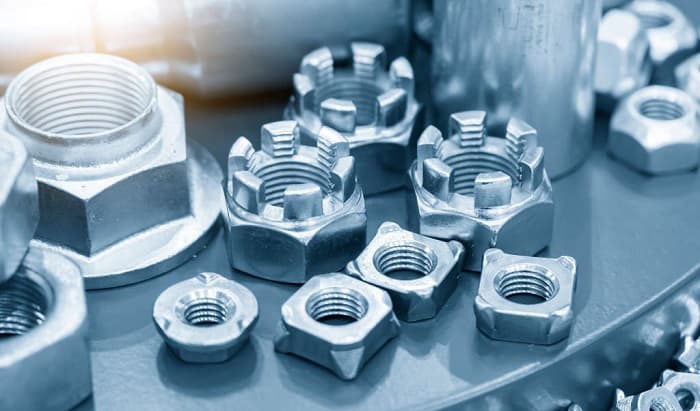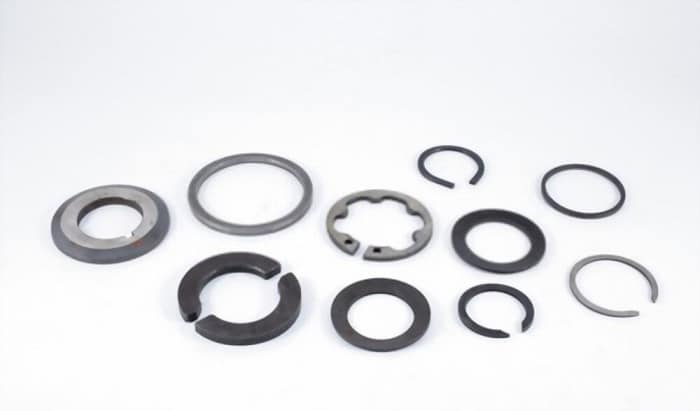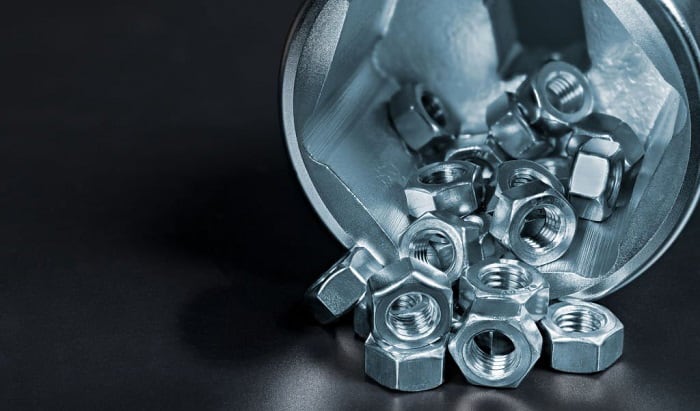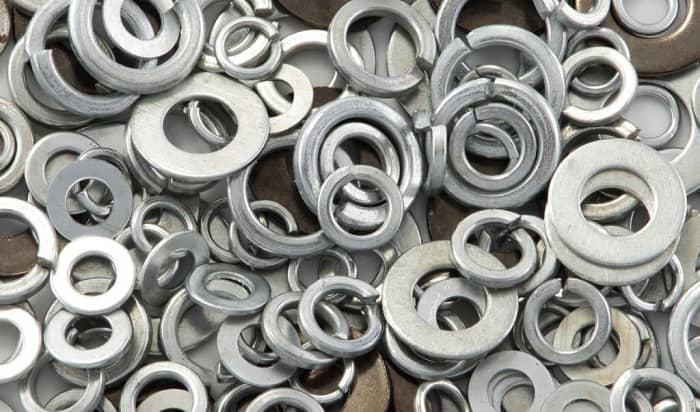Nuts and bolts always come together to keep an assembly intact with the help of a washer for more protection and better load distribution. There are instances that they loosen due to the environment, exposure to varying temperatures, and motion.
Lock washers and lock nuts were created to help address this issue of self-loosening.
Now, the question is, which one should you use for the installation of your setup? Read along, as this simple and basic information guide can help you solve the lock washer vs lock nut debate you might have in your mind right now.
Table of Contents
What Are Lock Washers
This kind of washer keeps the nut and bolt fastened and gives an assembly additional tension that prevents them from getting loose. It’s made of stainless steel, carbon steel, aluminum, bronze, K-Monel, and phosphor bronze alloy.
The shape and material used are of great importance as the design contributes significantly to its strength and ability to stop a linked component from getting loose. Don’t get confused with a retaining nylon lock washer that has a different use.
1. How does a lock washer work?
The function of a lock washer is to limit and prevent self-loosening aside from spreading more load, just like a standard washer. There are different lock washer types suitable for every project.
2. When to use a lock washer?
A lock washer is your best option when an assembly is exposed to shocks and vibration, just like in a washing machine, a carriage, or a vehicle.
3. Lock washer types
- Split ring/Spiral spring
The most widely used and the cheapest lock washer on the market. Also called a helical spring lock washer due to its shape, resembling a ring cut with uneven ends and slightly inclined outside each other.
As you tighten this type of lock washer, preload forms on the screw, and each end is driven into the nut and the mounting surface. Once fastened, the expanding lock washer puts forth more pressure when the nut loosens, producing a springing action.
- Internal Tooth
It has many bent teeth on the inner diameter, created to bite, cut, and generate tension against the head of a bolt or the nut. Ideal for shallow-headed fasteners, it can grip and absorb vibration that prevents the fasteners from getting loose.
- External Tooth
It has multiple teeth on the outer part. The serration strains and adds more tension on the surface and the teeth, keeping them confined and making it harder for the assembly to get unscrewed.
Used for large head screws and for maximum torsional resistance.
What Are Lock Nuts?
Lock nuts, also called locking nuts, are threaded fasteners. Like the standard nuts and bolts or mechanical fasteners, these are made of steel, and some have nylon inserts.
Unlike the regular nuts, these are engineered with flanged or pitted grooves intended to engage with projecting parts in locking surfaces to generate a more secure grip and avoid fastener slippage.
1. How does a locking nut work?
It works like a standard fastener, screwed onto a bolt for a joint assembly, but due to modifications, like altered threads, indentations, and some locking devices, they have higher resistance to shocks and vibrations.
2. When to use a lock nut?
Lock nuts are ideal when your setup is in an environment with intense vibration and dynamic loads.
3. Lock nut types
There are different types of locking nuts, further classified as follows:
Surface bearing nuts
They are free spinning nuts that must be tightened to a bearing surface for the locking mechanism to work. They are used for light to moderate load bearing assembly.
The two most common types are:
- K-lock or Keps – Pre-assembled hex nuts with a free-spinning toothed lock washer attached to them. It must be securely tightened for the teeth to engage and bite against the bearing surface.
It’s imperative not to overtighten this nut as it might flatten the teeth and might only work as a regular washer.
- Serrated Flange- Serrated flange lock nuts are hex drive nuts that work when the serrations come into contact with the mating surface upon tightening. They are often used for faster assembly as there is no need for a separate washer.
Prevailing torque nuts
They work when torque is applied to turn the nut down a thread to the bolt. It works by generating friction that raises the resistance to the pressure of accidental unlocking.
The following are the two main categories:
- Non-metallic or Nylon insert prevailing torque nuts (nylock or nyloc): These have undersized nylon or polymer insert that gets deformed by the threads of the mating bolt, which creates binding friction.
It reduces vibration and also provides a gas and moisture seal.
Best for assemblies exposed to less than 121°C, can be reused up to 15x. Most believe this type is the most reliable if the temperature is not an issue.
- All-metal prevailing torque nuts: These nuts achieve the prevailing torque usually by distorting the top nut threads and grips into the mating part upon tightening. Best used for short threaded assemblies.
Pros and Cons
Lock washers and lock nuts have almost the same function, but the difference is with a lock washer, you still need to use a lock nut or a standard nut.
Also, a lock nut can work on its own in most applications, the main advantage of using lock nuts vs lock washers.
On the other hand, one of the advantages of using a lock washer over a lock nut is the cost and availability. You can use it with any standard nuts, even reuse a nut from another assembly.
Conclusion
Vibration makes it easy for fasteners to come loose; hence, these are frequently utilized in the transportation sector and other machinery. This lock washer vs lock nut comparison may be helpful for folks wondering which one to use.
Ideally, the materials and finishes of the washers, nuts, and bolts/screws should match. Check and follow the manufacturer’s guide on torque values and use the most appropriate fastener to achieve the proper clamping force.
Choosing the best option available and not reusing it is suggested, especially if safety is an issue.
Related guide:

I am the last member to join Revolar and might be just the luckiest to work with dedicated people like Teddy and John. Our team has established a process where my only job is writing the best content to deliver incredible ideas and guides.






